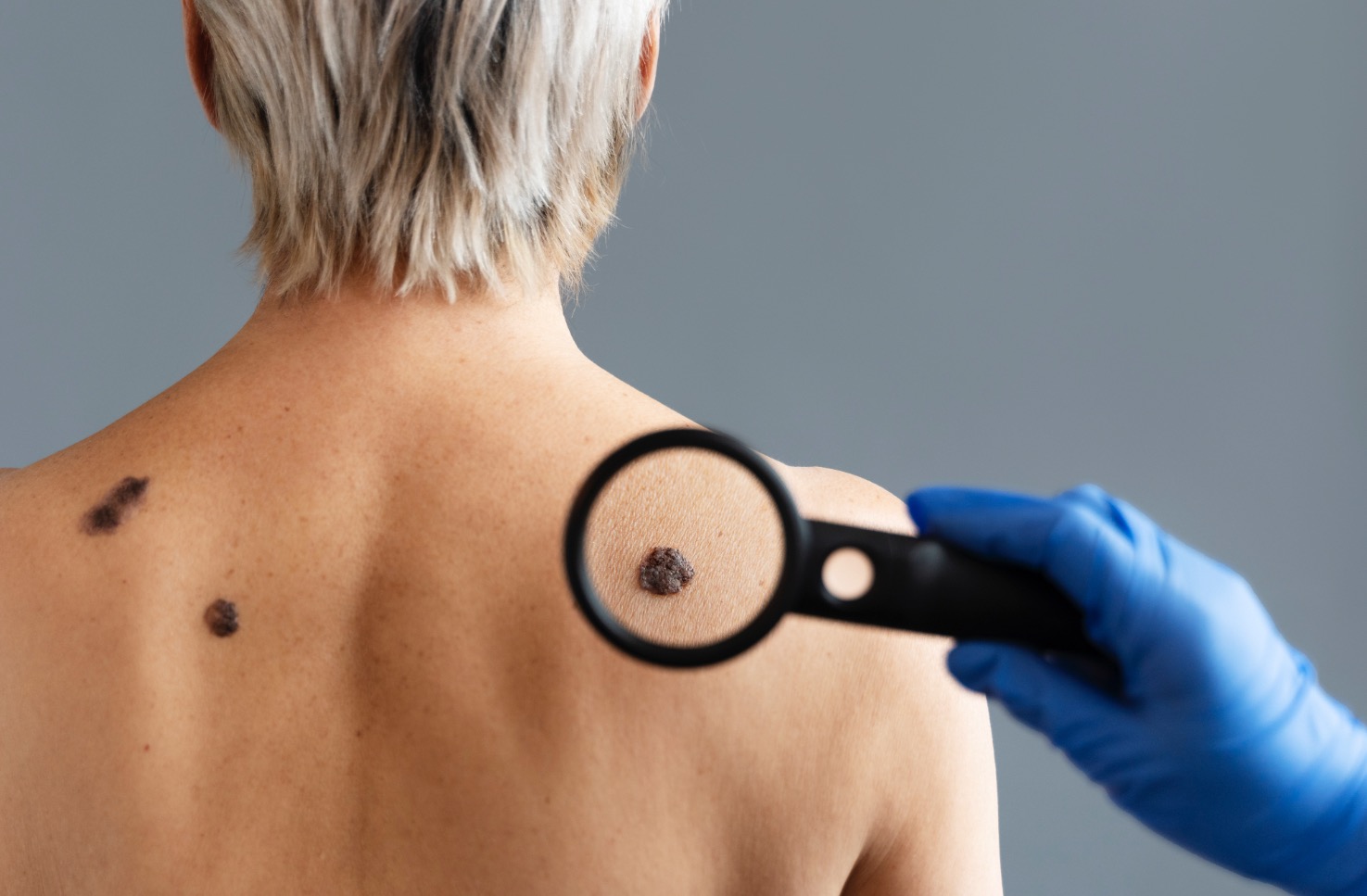
Skin cancer is the most common type of cancer in the United States, but the good news is that most forms of skin cancer are highly treatable when caught early. The three most common types of skin cancer are Basal Cell Carcinoma (BCC), Squamous Cell Carcinoma (SCC), and Melanoma. Understanding these types and recognizing the warning signs can help you stay ahead of potential skin issues and protect your health.
What Is Skin Cancer?
Skin cancer begins in the skin cells and is typically caused by prolonged exposure to ultraviolet (UV) rays from the sun or tanning beds. The three most common types of skin cancer have different characteristics, growth patterns, and treatment options.
Let’s break down these types and how to spot them early.
1. Basal Cell Carcinoma (BCC)
Basal Cell Carcinoma is the most common form of skin cancer, accounting for around 80% of skin cancer diagnoses. It begins in the basal cells, which are located in the deepest layer of the skin’s epidermis. Though BCC typically grows slowly, it can cause damage to surrounding tissues and, if left untreated, may spread to deeper layers of the skin.
What does BCC look like?
– A small, shiny bump or nodule that may appear pearly, translucent, or skin-colored.
– A flat, scar-like area that may look like a patch of dry skin.
– Sores that bleed or don’t heal.
– Itchy or irritated skin.
BCC is often found on areas that are frequently exposed to the sun, like the face, neck, ears, or arms. While it’s usually not life-threatening, it’s important to treat BCC early to prevent further skin damage and potential disfigurement.
Treatment options:
– Excision (surgical removal of the tumor).
– Curettage and electrodesiccation, which involve scraping and using heat to destroy the cancerous cells.
– Topical medications or creams for smaller or superficial BCCs.
– Mohs surgery, a precise technique used for larger or more difficult-to-treat BCCs.
2. Squamous Cell Carcinoma (SCC)
Squamous Cell Carcinoma is the second most common type of skin cancer. It arises from squamous cells, which are found in the upper layers of the skin. SCC is typically more aggressive than BCC but is still highly treatable when detected early.
What does SCC look like?
– A rough, scaly patch or firm red nodule.
– A wound that doesn’t heal, or a sore that bleeds or crusts over.
– Painful or tender areas of the skin.
– May appear in areas exposed to UV rays like the face, ears, neck, lips, or hands, but can also develop in areas less exposed to the sun.
SCC has the potential to spread to other parts of the body, which makes early detection and treatment vital. It’s often associated with prolonged sun exposure or a history of sunburns.
Treatment options:
– Surgical excision: Removal of the tumor.
– Mohs surgery: A technique that removes cancerous tissue layer by layer to preserve as much healthy tissue as possible.
– Radiation therapy: For cancers that are hard to remove or have spread.
– Topical treatments: Certain creams or medications for early-stage SCC.
3. Melanoma
Melanoma is the most serious type of skin cancer. It develops from melanocytes, the cells responsible for producing melanin (the pigment that gives your skin color). While melanoma is less common than BCC and SCC, it is much more aggressive and can spread to other parts of the body, making it life-threatening.
What does melanoma look like?
Melanoma often starts as a new mole or develops in an existing mole. The key signs to look for are part of the ABCDE rule:
– Asymmetry: One half of the mole doesn’t match the other.
– Border: Irregular, ragged, or blurred edges.
– Color: Multiple colors (black, brown, tan, red, blue, or white) within the same mole.
– Diameter: Larger than 6 millimeters (about the size of a pencil eraser).
– Evolution: Changes in the size, shape, or color over time.
Melanomas can develop anywhere on the skin but are more commonly found on the trunk, legs, arms, or face. It’s crucial to pay attention to any changes in your skin, as melanoma can grow quickly.
Treatment options:
– Surgical removal: Often the first line of treatment for localized melanoma.
– Immunotherapy: Boosts your immune system to help fight melanoma cells.
– Targeted therapies: Drugs that target specific genetic mutations in melanoma cells.
– Chemotherapy and radiation therapy: Used in more advanced stages.
Prevention and Early Detection
The key to successfully treating skin cancer is early detection. Regular skin checks and being mindful of any changes in your skin can help catch these cancers at their earliest and most treatable stages. Here are some important prevention tips:
– Wear sunscreen with an SPF of at least 30, and reapply every two hours when outdoors.
– Seek shade, especially during peak sun hours (10 a.m. to 4 p.m.).
– Wear protective clothing, hats, and sunglasses.
– Avoid tanning beds.
– Check your skin regularly for any new or changing moles, spots, or lesions.
If you notice any changes in your skin or moles, make an appointment with us here at Oak Tree Dermatology for an evaluation. Skin cancer is highly treatable when caught early, so regular skin exams are vital for maintaining skin
health. Remember: Prevention is key, and early detection saves lives!


